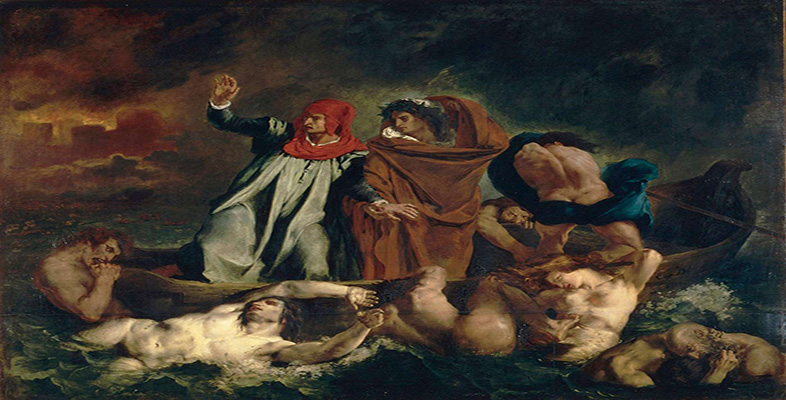2.9 Painterly techniques
A sensuous use of colour subverted the neoclassical aesthetic, in which moral and intellectual messages – or, at the very least, a concept of ‘noble form’ – were intended to dominate. In the case of Delacroix, this attention to the effects of colour is heightened by a concern with the textural qualities of paint. In order to produce a matt but bright surface, he applied thin layers of oil glaze to an initial lay-in of distemper (see ten-Doesschate Chu, 2001, p.102). It is thought that he was aiming to produce an effect similar to that of pastels and watercolours – many of his preliminary studies for the painting are in pastels. Indeed, Delacroix learned from various other artists. For example, he established a firm friendship with Richard Parkes Bonington, the English watercolourist. He later recalled how he and Bonington had met in around 1816, when Bonington was working on studies in the gallery of the Louvre. The two artists met again when Delacroix visited England in 1825 and later shared a studio in Paris. Delacroix admired and tried to emulate the lightness of touch and sparkle of Bonington’s technique (see Plate 13)
Click to see Plate 13: Richard Parkes Bonington, Rouen from the Quays [Tip: hold Ctrl and click a link to open it in a new tab. (Hide tip)]
Whereas neoclassical work aimed to preserve a smoothed-down paint surface produced by the use of delicate, fine brushstrokes, Delacroix applied to the finished canvas of Sardanapalus a technique called flossing. Possibly borrowed from Constable, whose Haywain Delacroix had seen in the Salon of 1824, this process involves the application of short delicate strokes of colour on top of the ‘finished’ paint surface and enhances the impression of sparkling light. This clearly demonstrates Delacroix’s adventurous approach to technique. He also borrowed from Constable, in this and earlier works, the method of applying thin colour cross-hatchings to distemper in order to achieve his shadows. Traditionally, shadows had been painted as thin, dark glazes, with no colour interest at all: they had had a muddy, dirty effect, as the local (actual) colour of an object had been mixed with black. Constable and Delacroix revolutionised the painting of shadow by representing it as composed of strands of colour. This was a far cry from conventional academic chiaroscuro. Chiaroscuro is the use of light and shade to model form (that is, to suggest the three-dimensional presence of objects and figures) or to create tonal effects, from the subtle to the dramatic.
